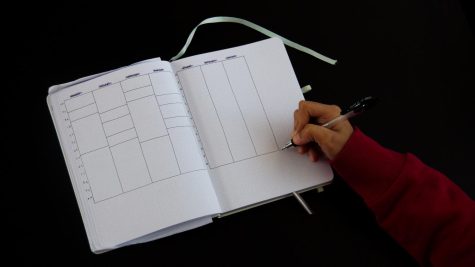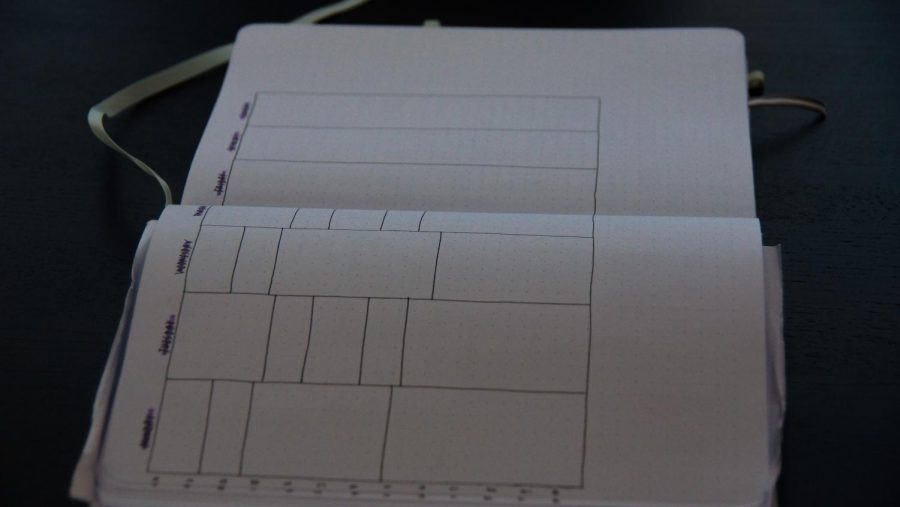A connection between planning and art
Why you should consider bullet journaling
February 7, 2023
I first encountered bullet journaling back in 2018 when I started watching videos by YouTuber and artist AmandaRachLee. A couple of months later, I bought my first journal and never looked back. After that, bullet journaling weaved itself effortlessly into my life, combining my love for art with my habit of planning.
As an artist, my journal has undoubtedly served as a creative outlet for me; above all, it has provided me with a way to keep myself organized. At its core, bullet journaling is a concise and personalizable approach to planning.
Originally developed by Ryder Carroll, a digital product designer and author, bullet journaling is an “analog system” which allows you to concisely organize your to-do lists, tasks and other thoughts.
A typical bullet journal includes the yearly, monthly and daily logs, also referred to as spreads. A yearly log, also known as a future log, is set up at the beginning of a new year and gives you a bird’s eye view of the year. On the other hand, the monthly and daily logs are set up as the year progresses and allow for more detailed planning.
The system also uses simple symbols to denote tasks and events. In addition, there are signs and symbols to denote the completion of a task, the migration of a task to another day or its cancellation as well. This system of signs and symbols is called a key.
Together, these two elements form the basis of bullet journaling. Every month, you set up your monthly spread, noting important dates, deadlines and tasks you want to accomplish for the month, referring to your future log as needed. As the month progresses, you set up a daily log to plan out your day with the help of your monthly log, using the key to keep track of events and tasks.
As someone who has used a premade planner in the past, I found that they did not provide me with the flexibility that bullet journaling does. Pre-made planners can become monotonous, and there is no way to play around with layouts or change things up as your planning needs evolve throughout the year.
On the other hand, once you get the hang of bullet journaling, you can start exploring different layouts to organize your tasks and see what works best for you. During the five years I have been bullet journaling, I have come up with many different ways to organize various aspects of my life and all I needed was a notebook and a pen.
Along with spreads for planning, bullet journaling is also a great way to dump your thoughts, make lists or track essential habits as you plan.

While a lot of these things can be implemented into a premade planner, what attracted me to the system is that nothing is set in stone — you start your journal on a blank slate and make your monthly and daily logs as you go, which allows you to experiment with your planning. There are so many people whose journals I have come across over the years, with everyone adding their unique touch to their journaling process. Your journal becomes a reflection of your life — an organized snapshot that makes you more mindful of the things you do.
And while most people who bullet journal use a dotted notebook, that is not a requirement. I used to bullet journal in an old lined notebook and found it just as effective. And if paper is not your thing, you can also bullet journal digitally.
Bullet journaling lacks the formality of a pre-made planner but does not fall short of being an effective way to plan. It is a more personalized way of staying on top of things.
So, if you are looking for ways to improve your organizational skills and want to try something new, I highly recommend giving bullet journaling a try.













